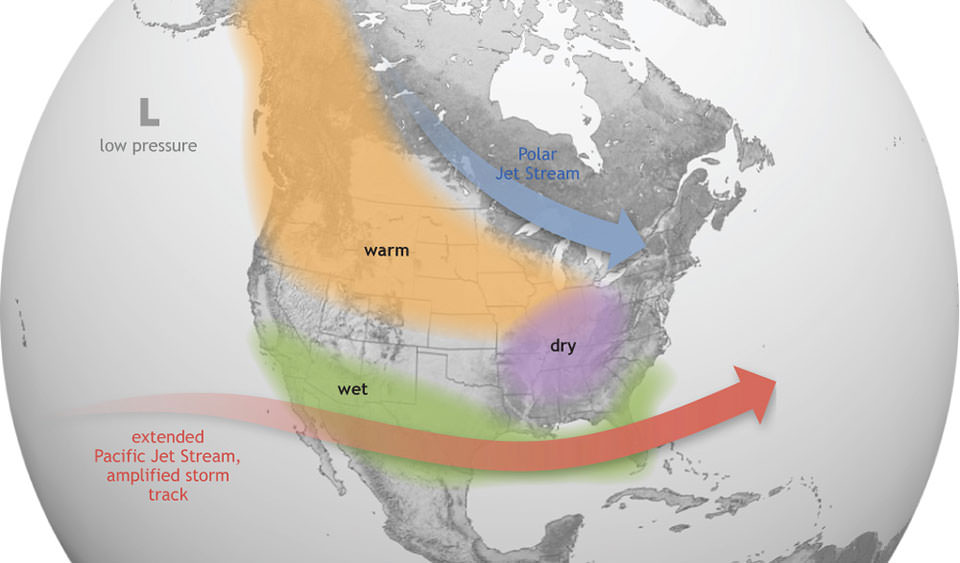This is the child who terrifies the world and even threatens it!
The strange thing is that this child only appears after a month or so, then disappears and reappears again with more severe changes!
This Child is responsible about widespread changes in the climate system that last several months and can lead to significant human impacts affecting things such as infrastructure, agriculture, health, and energy sectors.
What is El Niño?
El Niño means Little Boy in Spanish. South American fishermen first noticed periods of unusually warm water in the Pacific Ocean in the 1600s. Its name “the boy” is thought to have originated as “El Niño de Navidad“ centuries ago when Peruvian fishermen named the weather phenomenon after the newborn Christ.
The full name they used was El Niño de Navidad because El Niño typically peaks around December.
The name ‘El Niño’ is widely used to describe the warming of sea surface temperature that occurs every few years, typically concentrated in the central-east equatorial Pacific.
An El Niño is declared when sea temperatures in the tropical eastern Pacific rise 0.5 °C above the long-term average. El Niño is felt strongly in the tropical eastern Pacific with warmer than average weather.

What is La Niña?
‘La Niña’ or “the girl” is the term adopted for the opposite side of the fluctuation, which sees episodes of cooler than average sea surface temperature in the equatorial Pacific. The conditions for declaring ‘La Niña’ differ between different agencies, but during an event sea temperatures can often fall 3-5 °C below average. Cooler, drier than average weather is experienced in the tropical eastern Pacific.
There are also neutral phases of the cycle when conditions are closer to the long-term average (within +/- 0.5 °C). These may be within a period of warming or cooling in the cycle. Approximately half of all years are described as neutral.
Can both El Niño and La Niña have impacts on weather, wildfires in the world, ecosystems, and economies??!! Episodes of El Niño and La Niña typically last nine to 12 months, but can sometimes last for far too long be years!!
El Niño and La Niña events occur every two to seven years, on average, but they don’t occur on a regular schedule. Generally, El Niño occurs more frequently than La Niña and has their strongest influence on U.S. seasonal climate in winter. Upstream of the United States, the Pacific jet stream strengthens and carries more storms across the U.S. South, favoring cooler, wetter winters. From the West Coast to the Great Lakes, Northern states often have warmer-than-average winters
These episodes alternate in an irregular inter-annual cycle called the ENSO cycle. It knows this phenomenon for ‘El Niño Southern Oscillation‘, where ‘Southern Oscillation’ is the term for atmospheric pressure changes between the east and west tropical Pacific that accompany both El Niño and La Niña episodes in the ocean.
As we know El Niño events occur irregularly at two- to seven-year intervals. However, El Niño is not a regular cycle, or predictable in the sense that ocean tides are
What is happen during La Niña?!
El Niño produces widespread and sometimes severe changes in the climate. Convection above warmer surface waters brings increased precipitation. Rainfall increases drastically in Ecuador and northern Peru, contributing to coastal flooding and erosion. Rains and floods may destroy homes, schools, hospitals, and businesses. They also limit transportation and destroy crope
The waters off the Pacific coast will become colder and contain more nutrients than usual during La Niña, This environment destroys more marine life and more cold-water species, like squid and salmon, in places like the California coast.
In 1997 -98 was the first El Niño phenomenon to be scientifically monitored from beginning to end. Caused drought conditions in Indonesia, Malaysia, and the Philippines. While Peru experienced very heavy rains and severe flooding. In the United States, increased winter rainfall hit California, also the Midwest experienced record-breaking warm temperatures during a period known as “the year without a winter. Scientists have confirmed El Niño has officially been declared in 2023. This naturally occurring climate phase brings warmer weather throughout the globe and can increase the risk of extreme weather.
El Niño and how is it influenced by climate change
It seems the relationship between climate change and stronger El Niño is still a topic of ongoing scientific research. Despite there is no definitive agreement in the scientific community, recent studies suggest that global heating may be leading to stronger El Niño events.
Many scientists believe the effects of climate change will be intensified by El Niño because increased global temperatures are themselves associated with increased extreme weather events Therefore, the coinciding effects of both elevated temperatures and El Niño events are predicted to induce record-breaking spikes in global temperatures and a further increased probability that catastrophic weather conditions will occur.
Buoys and transmit data
These buoys transmit data daily to researchers and forecasters around the world. Using data from the buoys, along with visual imagery they receive from satellite imagery, scientists can more accurately predict El Niño and visualize its development and impact around the globe. Although the USGS doesn’t directly study or forecast the weather (our sister agency, NOAA, and its National Weather Service do), the USGS studies and documents the effects and impacts of long-term climate changes and weather phenomena across the U.S. and globally.
These events are associated with widespread changes in the climate system that last several months and can lead to significant human impacts affecting things such as infrastructure, agriculture, health, and energy sectors.
On 4 July 2023, the World Meteorological Organization announced the onset of an El Niño phase and estimated that there is a 90% chance El Niño will continue at moderate or high strength up to the end of the year. A variety of El Niño indices, including the Oceanic Niño Index (ONI), also predict with high certainty that an extended El Niño period with extreme weather conditions will last well into 2024 Global average temperatures have already reached record-breaking levels in 2023 and with a strong El Niño phase, it is likely the world will experience climatic instability equal to or greater to 2016, with widespread floods and droughts predicted to cause vast economic damage and food insecurity




